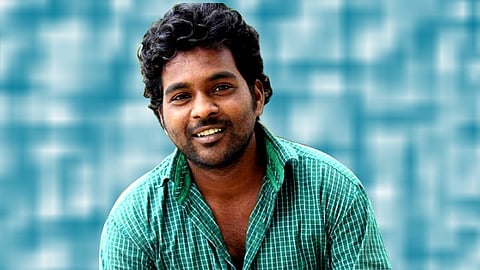
Bengaluru- Historically, Dalits were subjected to caste-based discrimination and exclusion from the mainstream Indian society. They were denied fundamental rights, which led to social, economic, cultural and political oppression. One of the most incredible denials is an opportunity for equal access to education. Even after the 75 years of Independence, marginalised communities are facing several forms of discrimination and exclusion in India.
However, several subaltern thinkers and leaders, including Phule and Ambedkar, advocated education as the only way to emancipate marginalised groups and initiated educational institutions. As the chairman of the Constitution Drafting Committee, Ambedkar incorporated several provisions to protect and promote the interests of Dalits, Adivasis, Minorities and Backward Communities.
The National Education Policy (NEP 2020) aims to improve the Gross Enrollment Ratio (GER) from 28% to 50% by 2035. It will remain a mirage if the Dalits and Adivasis are left behind in the age of inclusive education and female Dalit students face caste as well as gender bias and discrimination. Despite the prohibition of untouchability under Article 17 of the Indian Constitution and Prevention of Atrocities Act (POA), Dalit students are facing caste-based humiliation and discrimination in Indian educational institutions, including schools, colleges and universities. In government schools and colleges across the country, Dalit children are facing discrimination and exclusion; they are forced to clean the classrooms and toilets forced to sit on the last benches, denied food during midday meals and identify with caste names.
Similarly, premier higher educational institutions, including Central Universities, AIIMS, IITs, and IIMs, witnessed practicing discrimination based on the caste-based hierarchy. Rohit Vemula, a PhD candidate at the Central University in Hyderabad, faced all forms of caste discrimination on campus over issues related to student politics. He was denied a hostel, scholarship, access to classrooms, and a library and forced to commit suicide in January 2016. He was harassed and discriminated by the university authorities as he was a student leader among the Dalits asserting their rights. Similarly, many Dalit, Tribal and marginalised students are facing caste-based discrimination and exclusion in educational institutions across the country.
There are separate SC/ST hostels where the quality of food and infrastructure differ entirely from the general hostels. Students are identified as Dalits and Adivasis who live on free food and free education. The animosity of the students of the fee-paying communities towards the Dalits and Adivasis many times ends up in violence, verbal abuse and different forms of ragging, which are not reported, fearing reprisals.
The confidence of the Dalit students takes a big hit in elite institutions where the elite caste students outnumber the marginalised ones.
In 2021, the union minister of state for education informed the parliament that 19,000 students from the SC, ST and OBC categories dropped out from the IITs, IIMs and Central universities. This is a result of a lack of coping and redressal mechanisms and the stress level to bear the insults of not just fellow students from the so-called ‘merit classes’ and upper caste teachers.
Lack of Dalit representation in teaching and administration on the campuses is one the primary reasons for the denial of admission, guideship, and fellowships to marginalised groups. It is estimated that most Professors and 90% of Assistant and Associate Professors are from the elite castes at the IITs and the IISc.
Under such circumstances, how can we achieve inclusive development? ‘Saab ka saath, sab ka vikas’, the favourite slogan of the present government, will only remain as a luring vote bank slogan.
Anyone would feel safe in the presence of people from their communities; in this context, there are only two vice-chancellors, one a Dalit and another an Adivasi, among the 45 Central universities in India.
Though the University Grants Commission has made it mandatory for higher education institutions (HEIs) to set up SC/ST special cells, it is limited to collecting and circulating government orders related to different central government schemes that benefit these communities; the monitoring and disciplinary actions against violators are missing.
Hence, the Rohit Act becomes necessary for monitoring, protecting, and grieving redressal mechanisms for Dalit and Adivasi students, usually first-generation learners from semi-urban or rural backgrounds.
Like the Anti-Ragging (2011) and Nirbhaya Act (2013), the Rohit Act is necessary for protecting marginalised students. It would go a long way in controlling and preventing discrimination against Dalit students. The Act should enact laws to define the different forms of discrimination faced by students from marginalised communities, recognise the crimes, file FIRs immediately, conduct speedy trials, impose stricter punishments as well as provide legal and medical assistance and provide monetary compensation to the victims along with delivering them psychosocial counselling services.
Dr. Karamala Areesh Kumar is Head of Department of International Relations, Peace and Public Policy (IRP and PP), St Joseph’s University, Bengaluru
Dr. Paul Newman is Principal, St. Joseph’s Evening College (Autonomous) and Associate Professor, Dept of History, St. Joseph’s University.
You can also join our WhatsApp group to get premium and selected news of The Mooknayak on WhatsApp. Click here to join the WhatsApp group.